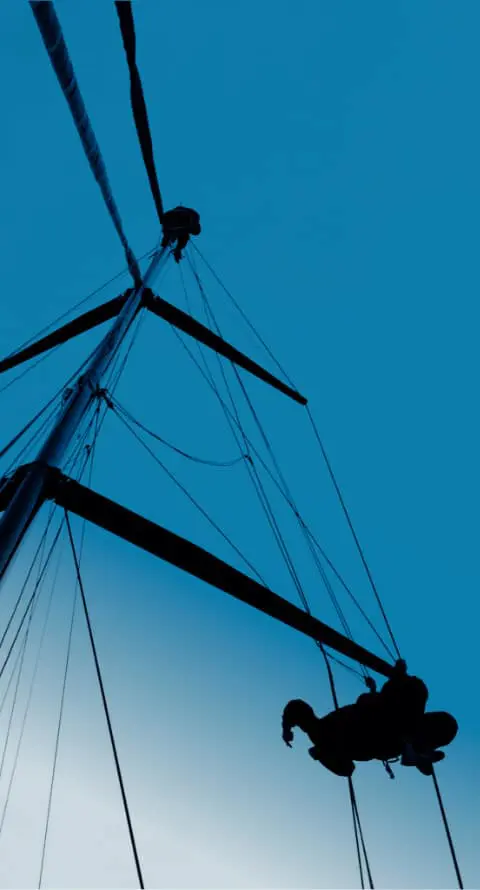Thanks to the tests made in different and
real sailing conditions on board of boats
having highly different performances,
armare can guarantee the durability of its
composite cables if properly used. They can
last in perfect working conditions for many
years, even longer than the corresponding
steel cables, fulfilling the sailor’s
expectation of performance.
Constant loads
For vertical rigging, forestays and fixed backstays, the best choice is PBO®, thanks to its exceptional resistance under constant loads. Over the years, PBO® cables are proving to be extremely durable and resistant, even more lasting then the corresponding cables in Nitronic or in steel rod.
Load / off-load
Diagonal and backstays are subject to very intensive loads, than they are fully downloaded or even go negative (e.g. the rigging downwind sailing upwind). Even for this items, PBO® is the best fiber, but are suggested reduced intervals of inspection and maintenance.
Torsional load (running/torsional)
Although the torsional cables can be structural, they need particular device in the construction, because it is necessary to provide excellent transmission of the torque along the cable, while maintaining good flexibility and possibility of traverse. These cable are made of PBO®, Kevlar® or Dyneema® and are more and more common and used. Armare torsional cable, structural and non-structural, have always proved characteristics of high efficiency and durability.

Cable life
guideline
While cruising the weight/diameter optimization is secondary to longevity and the cable life may be decided since the design process.
After 3 to 4 years (for race boats) and after 4 to 6 years (for cruising boats), Armare recommends to send back all the cables to the factory for an inspection service and testing cycle: the results of these tests provide guidance on whether or not, rigging elements need to be replaced. The Engineering Department of Armare is composed by a group of highly qualified technicians that offer permanent technical assistance for the cables and if necessary they can also do the inspection on board.
The terms here below are indicative and split, depending on the use and the navigation features the cable is usually subjected to. Generally speaking, a visual inspection should be made once a year as well as deeper inspections at suggested intervals. E.g. cables that are subjected to torsion need intervals of maintenance that are three times longer than the cables that are put under constant loads.
Control intervals *
| Maintenance action | Racing boat | Cruise boat |
|---|---|---|
| Annual visual inspection | 1 year | 1 year |
| Runners, Checks & Torsional cables | 2 years | 3 years |
| Diagonals, Forestay & backstay | 3 years | 4 years |
| Verticals | 4 years | 6 years |
(*) The term of control is the period after which the cable must be sent to Armare for a complete inspection in order to assess its conditions and redefine the limits of life. It does not represent in any way a guarantee of durability of the cable, which may require an earlier replacement, due to the real working conditions and the type of use.
Maximal durability *
Limit of duration of Composite Cables in PBO: 4 years
Limit of duration of material in K49: 4 years
(*) The time limit is the maximum useful life of a cable, in normal working conditions, after which the cable must be replaced or sent to Armare for a complete control, in order to assess a possible extension of duration. It does not represent in any way a guarantee of durability of the cable, which may require replacement, due to the previous real working conditions and the type of use.

